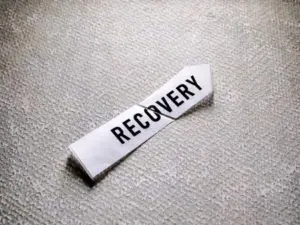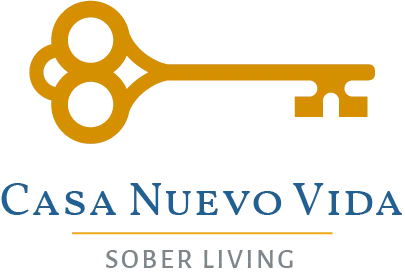When you or a loved one struggles with substance abuse, it can be challenging to know which path to recovery is the best. There are now so many ways to treat addiction, and each claims to be better than the last. By developing an understanding of the different recovery pathways, you can better understand which will work best for you.
Everyone Is Unique
Although addictive substances are the same, everyone has a different path to addiction. Thus, there will also be different pathways to recovery and sobriety. There isn’t a one-size-fits-all solution for everyone. It’s better to consider the individual and the types of therapies that will work best for them.
Treat the Whole Person, Not Just The Addiction

Multiple Pathways to Recovery From Substance Abuse
There are many different strategies for overcoming substance abuse. Read on to learn more about each of these strategies and when they work best.
Behavioral Therapy
Behavior therapy helps patients identify unhealthy behaviors, like substance abuse. This therapy works to change these unhealthy behaviors and focuses mostly on current issues.
Cognitive-Behavioral Therapy (CBT)
Cognitive Behavioral Therapy, or CBT, starts with the premise that unwanted behaviors like substance abuse stem from wrongful ways of thinking and learned patterns. CBT helps patients to shift their thinking and thus change their behaviors. CBT doesn’t put much focus on what happened in the past and instead works on changing the way a patient thinks now.
CBT typically involves working one-on-one with a therapist to better understand a person’s thinking and patterns. The therapist helps the patient understand what’s wrong with their way of thinking and develop solutions to change their behavior in the future. Essentially, the patient learns how to think about situations as they arise and make decisions based on reality and their best interests.
CBT can help substance abuse patients understand how their thought patterns can lead to bad choices. It can help them to let go of the thoughts that lead to substance abuse. CBT is particularly helpful for patients who also suffer from other mental disorders like anxiety and depression.
Contingency Management
Contingency management doesn’t put much emphasis on past events or behaviors. Instead, it rewards patients for making positive changes now and in the future. Facilities reward patients for a number of behaviors that go toward helping them overcome substance abuse, including passing drug tests, attending meetings and counseling, and hitting milestones in their recovery. Rewards can be monetary, and are usually vouchers or gift cards, but can also be prizes.
Contingency management is a research-based therapy that has been shown to work overtime. The idea is that the reward reinforces the good behavior and gives patients a positive feeling about that behavior. Over time, the patient no longer needs the reward, but will still have positive feelings about making the right choices.
This treatment is often a good option for patients who aren’t motivated to change their habits but are willing to consider options. Outside motivation can help them develop better habits. It also works well with other treatments, such as a 12-step program.
Motivational Enhancement
Many times, people addicted to a substance aren’t motivated to begin treatment and quit using. Motivational Enhancement Therapy (MET). After some testing, a patient will have a few sessions with a therapist where the therapist inspires quick changes in motivation.
The idea is to get the patient motivated and developing solutions for dealing with situations involving substance abuse. MET is often used in conjunction with other therapies. It’s been proven to be most effective with adults who abuse alcohol and marijuana. MET hasn’t been as successful with teens or people who use harder drugs.
Family Therapy
Family therapy is another pathway to recovery. Family therapy focuses not just on the patient, but on the wider family who also deals with the substance abuse problem. Family therapy helps families work through the dynamics of their relationships. Families work with a therapist to figure out which interactions can create problems and which can be helpful.
Family therapy is helpful for patients who live with their family, have close bonds with family members, or have strained family relationships that play a role in their substance abuse.
12-Step Programs

The 12-step model involves admitting to a problem, submitting to a higher power, making amends to those who have suffered because of the addiction, and working to stop the addiction. Secular programs don’t put an emphasis on belief in God but instead focus on admitting a loss of control and making amends.
12-step programs work well for those who want to rely on others who have been through some of the same problems. Patients will have a network of sober people who can help them through difficult times. They also work well for people who like to work through problems in increments.
Psychotherapy and Psychiatry
Psychotherapy and psychiatry involve working with licensed psychiatrists to pursue the best courses of treatment. The patient may undergo some of the behavioral therapies listed above along with medication to treat any co-occurring issues, like depression. In some cases of severe substance abuse, the psychiatrist may prescribe a medical detox.
Psychotherapy can work well for patients who have severe issues with addiction, such as using hard drugs. It’s also good for patients who suffer from other mental issues along with addiction.
Medication
Medication can be effective for those struggling through the detox process. Different medications will be used based on the type of substance that was abused. Often, medication is used first to help the patient with the physical symptoms of withdrawal. It’s followed up with one of the other treatments listed here to help with mental issues from withdrawal.
For those suffering from alcohol or opioid abuse, a psychiatrist or doctor sometimes prescribe medication to prevent relapse. Medication can be helpful for those suffering from severe substance abuse or those who have co-occurring disorders.
Support Groups
Support groups are similar to 12-step programs in that patients can rely on others for support and relate to similar experiences. Support groups meet with a counselor who guides the conversation. Patients will talk about their past experiences and share their setbacks and successes on the pathway to recovery.
Support groups are helpful for patients who are more social and depend on others for help. These groups often operate even after patients have achieved sobriety and can help patients find activities that don’t involve substance abuse.
Holistic Therapy
A holistic approach involves treating the entire body and taking care of yourself physically in order to help you overcome addiction.
Holistic treatment may involve:
- Yoga/meditation
- Therapeutic massage
- Exercise
- Equine therapy
- Hypnosis
- Healthy eating/nutrition
The idea is that treating addiction involves the entire body. As the patient is starting a new phase of their life, it only makes sense that they would want to heal their body as well. By improving the body, the patient may be motivated to make better choices when it comes to substance abuse.
Holistic treatment is often used in conjunction with another of the listed treatments, as it doesn’t directly treat addiction.
Which Recovery Pathway Is The Best?

Instead, different pathways will work better for different people. Typically, one path isn’t enough. Patients usually mix two or more of the pathways to create a solution that works for them and their unique circumstances.
You may need to try out several different recovery pathways before you find the combination that works for you. There is no simple cure for addiction, but for those who are ready to stop substance abuse, there are many roads to sobriety.
Simply put, you can’t give up if the first therapy you try doesn’t work for you. Casa Nuevo Vida sees treatment as an ongoing process where patients try new strategies and find solutions that are helpful to them.
Casa Nuevo Vida Meets You Where You Are
At Casa Nuevo Vida, we understand that each patient has individual needs and that paths to recovery will look different from one person to the next. We want to help our patients find the path that will help them regain control of their life and embrace a healthier lifestyle.
At Casa Nuevo Vida, we base our recovery program on the principle of “meeting people where they are,” and that means offering multiple pathways for recovery. Contact us today to get started on your journey to a better life.
References:
https://www.apa.org/ptsd-guideline/patients-and-families/cognitive-behavioral
https://www.ncbi.nlm.nih.gov/pmc/articles/PMC3083448/
https://www.ncbi.nlm.nih.gov/books/NBK64269/

